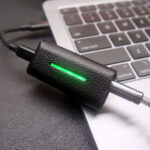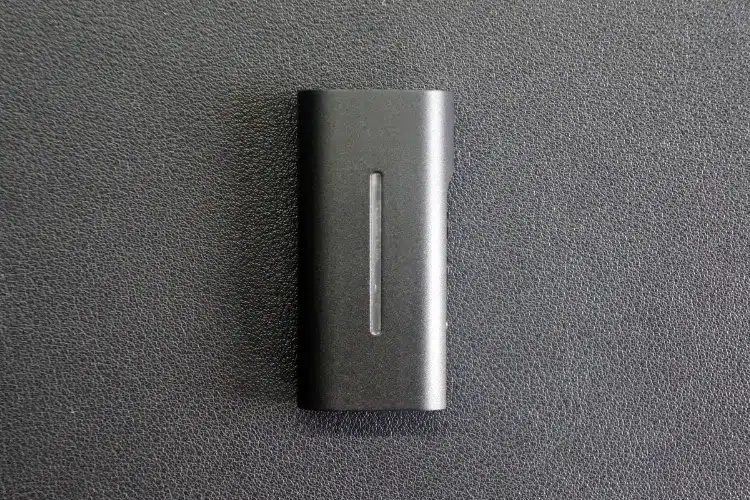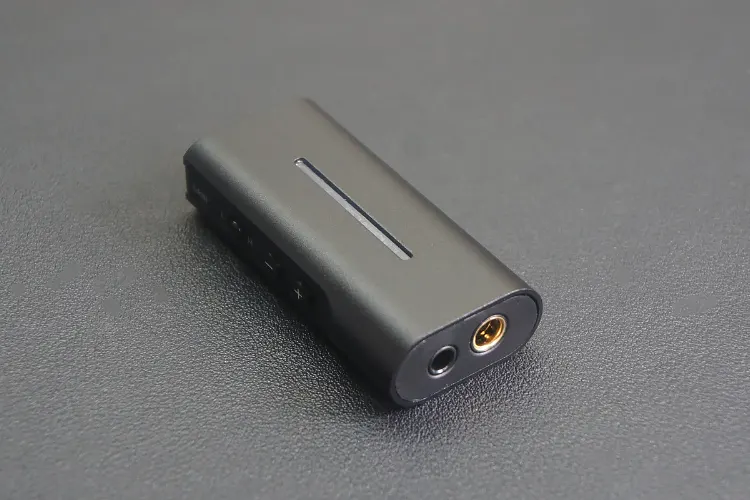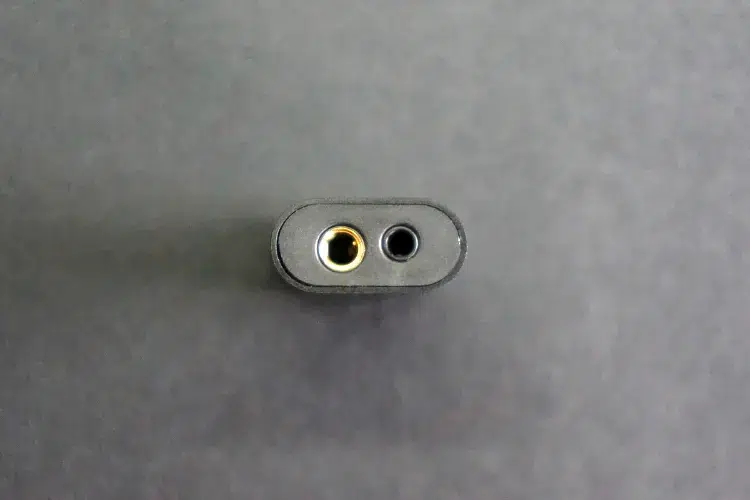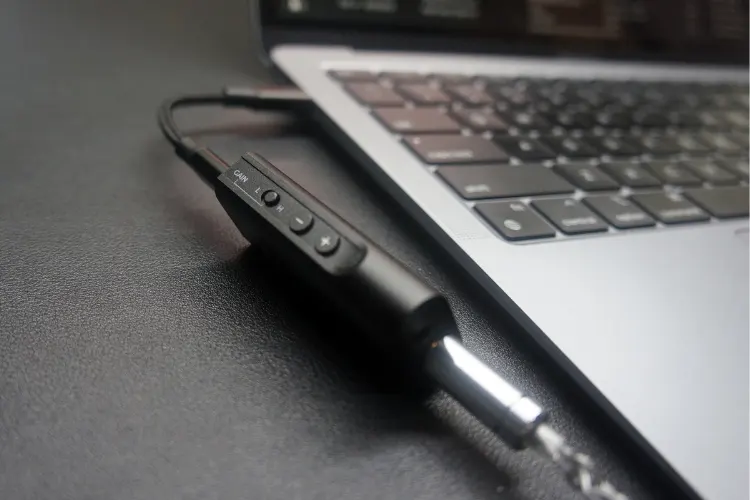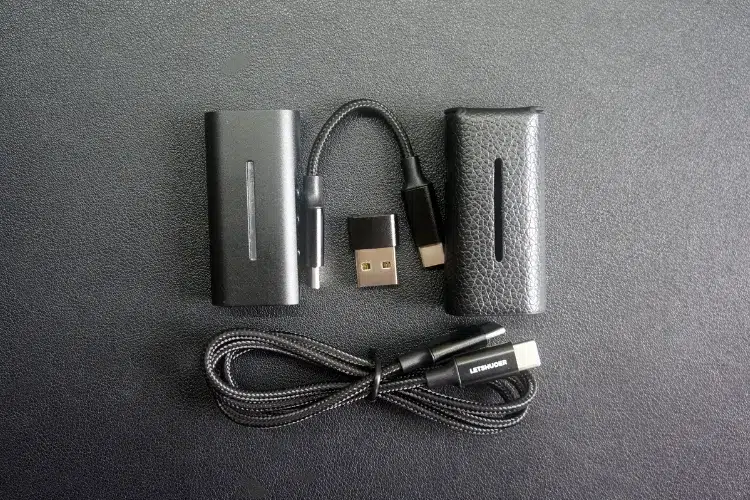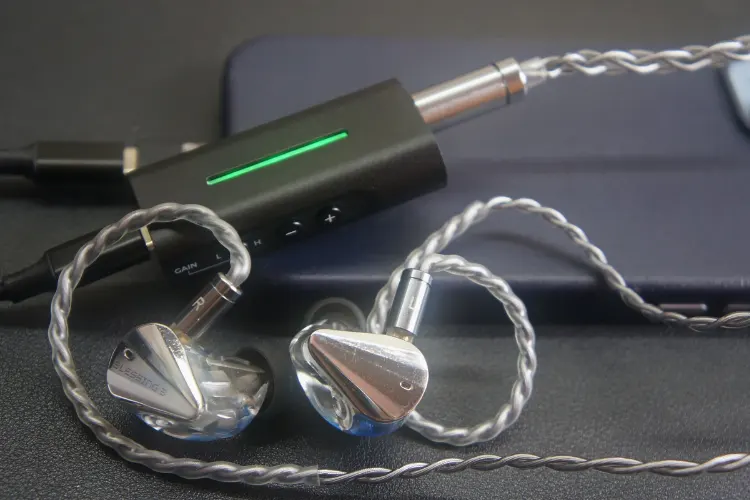In this feature, Meldrick reviews the LETSHUOER DT03, which is a dual ES9219C dongle DAC with up to 195mW of balanced output power. It is priced at $99.
Disclaimer: This sample was sent to me for my honest opinion. Headfonics is an independent website with no affiliate links or status. I thank LETSHUOER for their support.
Click here to read more about LETSHUOER products previously tested on Headfonics.
Note, that this article follows our latest scoring guidelines which you can read here.
Within the Chi-fi space, LETSHUOER has been gaining popularity due to their competitive IEMs at all price points from the S15 and Cadenza4 to the flagship Candenza 12.
At the same time, they have started to make inroads into the Dongle DAC market once again after their previous DT02 dongle. Their latest portable DAC, the DT03, is priced at $99 and is the company’s flagship dongle DAC.
To see how LETSHUOER’s latest release performs and compares to other dongles in the market, continue reading my review below.
Features
The LETSHUOER DT03 is among the few portable dongle DACs with dual ES9219C chips, enabling the DT03 to support PCM up to 32BIT/384kHz and native DSD256.
Unlike most portable dongles within the price range, the DT03 integrates nice-to-have usability features such as a dedicated high and low gain switch, including OS-level volume control buttons.
The dedicated high and low gain switch boosts the unit’s versatility, enabling it to pair well with sensitive IEMs and even some full-sized headphones.
While the OS-level volume control ensures convenient volume control that can be easily accessed without opening the source device, and without the need to monitor separate volume levels for both the source and dongle.
The DT03 offers both SE and balanced outputs. The SE output can deliver a solid 78mW into 32Ω. It more than doubles this power via its 4.4 BAL output, driving up to 195mW at 32Ω.
Design
The LETSHUOER DT03 dongle DAC is made of CNC-milled aluminum with an anodized black finish, giving it a stylish and compact look. It feels comfortable to hold and use daily due to the perfect curve and chamfering at the edges.
In my testing, the anodized finish was resistant to fingerprints and micro scratches, maintaining the DT03’s stealthy appearance throughout my review period.
The cutouts on the side of the unit for the switches and buttons have no sharp edges, ensuring unobtrusive operation. The buttons themselves have a satisfying microswitch click, providing a tactile feel without being noisy. The gain switch is especially pleasing to click.
At the top of the unit, the output jacks are well-engineered with excellent tolerances, making it easy to plug in cables, unlike other less-premium dongles. At the bottom, you’ll find the unit’s sole input: a female USB-C for connecting the included cables or any compatible cable in your collection.
The back side of the device is bare except for a tiny LETSHUOER logo, with the specs listed below. The DT03 is equipped with a sampling rate indicator light on the front: green for PCM up to 96kHz, blue for up to 192kHz, and red for up to 352.8kHz.
This indicator light has been designed to illuminate gently, so it won’t be an eyesore in dark rooms, yet it remains easily visible when needed.
I/O
The DT03 features a single input: a female USB-C jack that pairs with either of the two included USB-C cables (12.5cm and 80cm) or any compatible cable you prefer.
The detachable USB-C cable allows it to easily connect to various sources like iPhones and desktop computers, simply by swapping out the cable.
On the output side, the DT03 includes a 3.5mm SE and a 4.4mm balanced output. The SE output ensures compatibility out of the box with more affordable IEMs that pair well with dongles in this price range.
Meanwhile, the 4.4mm output ensures the dongle remains useful when listeners experiment with pricier balanced cables and IEMs or headphones that require more power.
Controls
The DT03 features physical volume up and down buttons that operate on an OS level. On all the sources I tested, including Windows laptops, MacBooks, iPhones, and USB-C Android phones, the dongle can control the system volume without needing a driver installation.
The volume control is implemented through small, flat microswitches that protrude slightly from the cut-out on the right side of the unit. The switches have nice tactile feedback but remain silent.
The DT03 also includes a high-low gain switch with a satisfying click. I didn’t notice any clicking or pausing when switching gain settings while playing audio.
Packaging & Accessories
The DT03 comes in a simple black box that includes:
- One 12.5cm and one 80cm Type-C to Type-C signal transmission cable.
- Type-C to standard USB adapter.
- Black faux leather protective case.
- Simple instruction manual.
The inclusion of a longer 80cm cable and the Type-C to Type-A USB adapter is a nice touch, making it compatible with desktop PC setups right out of the box.
Sound Impressions
All testing and comparisons were done through 3 pairs of IEMS, namely the Moondrop Blessing 3, the Yanyin Canon II, and the Tanchjim Kara, as well as the HIFIMAN Ananda full-sized planar magnetic headphones.
Summary
The DT03 presents an interesting sound profile, with its lean mid-range presentation, as well as good playback of percussive instruments it comes off sounding V-shaped.
It excels in articulating snare drum hits, cymbal crashes, and kick drum hits in a textured and musical manner, however, its compressed presentation of string instruments and vocals in the mid-range leaves more to be desired.
This signature lends itself well to more percussive-focused jazz or film soundtracks, where the compressed-sounding strings and vocals are not too much of an issue.
With its lean-sounding mid-range and compressed presentation of string instruments, the staging and dynamics performance is sub-par to decent at best.
Timbre
A common theme in the DT03’s sound signature is its emphasized presentation of percussive instruments. This enables it to deliver a deep, textured, and powerful bass response.
In simpler recordings with classic drum kits, the kick drum hits have an atmospheric quality that never overpowers any other instruments in the mix, but still maintains a natural musicality.
Electric bass notes that veer closer to the mid-bass region have a leaner presentation, giving rhythmic bass lines a narrow-sounding bass line that doesn’t deliver the thick and encompassing sense of sound that other warmer or more neutral sources deliver.
This ensures that the DT03’s bass never bleeds into the mid-range but it also means a leaner mid-range, and a sound that is less spacious and open compared to other dongles.
This leanness makes the mids sound thinner, but it enhances the articulation in the upper mids and lower treble, with snare drum hits and hi-hats particularly standing out.
It emphasizes percussive instruments in stripped-back arrangements like acoustic pop and funk. This emphasis on the lean mid-range reduces the prominence of instruments such as electric guitars, higher-pitched bass lines, electric keys, and synths.
Aside from percussive instruments, the DT03 plays back mid-range instruments with a lack of note weight. I found that most vocals and instruments in the mid-range struggle to express the same sense of emotion and musicality usually present in other dongles and sources.
Its articulation in the treble regions is noteworthy, with percussive and cymbal instruments, especially snare drum hits, being rendered with sufficient microdetail to highlight nuanced tempo changes.
Cymbals and snare drums often stand out in the mix, particularly in simpler arrangements. Unlike other dongles that might highlight vocals, the DT03 consistently brings percussive performances to the forefront.
Staging & Dynamics
The DT03 has decent staging at best, I never found myself wowed by the placement of instruments around me, but they also never invoked a sense of too much intimacy.
It can sufficiently playback sounds as if they were away from the listener, however, its lean mid-range presentation makes string instruments and vocals sound compressed, as if all string instruments are being played right next to each other with very little space between them.
Imaging performance varies, ranging from decent on less complex tracks to subpar on busy tracks. In more straightforward compositions with fewer elements, individual instruments are fairly well separated.
However, since the notes don’t have much weight and there isn’t much detail in the mid-range, the precise location of those instruments isn’t portrayed well.
On busier tracks, imaging performance drops very noticeably. In complex Hip-Hop and Electronic arrangements, sounds of similar frequencies tend to unify into one another. The result is a wall of sound rather than individualistic instrumental placement.
Its bass and treble dynamics are quite good, being able to proficiently playback decaying tones in kick drums and cymbals without losing any texture or resolution.
However, its lack of note weight in the mid-range severely holds it back. The compressed presentation of the mid-range prevents it from achieving significant musical impact, especially in mid-range instruments.
Click on page 2 below for my recommended pairings and selected comparisons.


